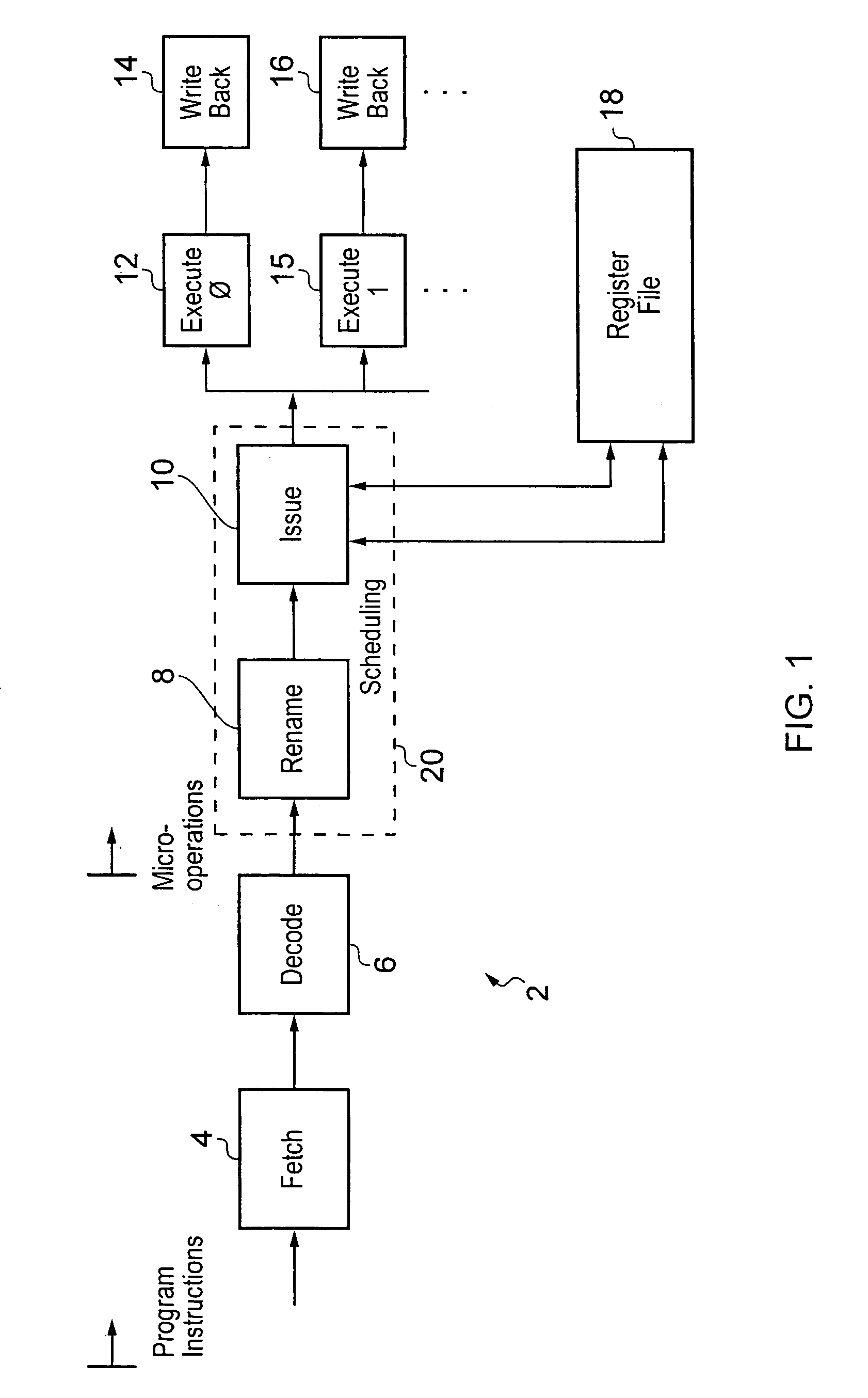Renaming wide register source operand with plural short register source operands for select instructions to detect dependency fast with existing mechanism
a technology of wide register source operand and short register source operand, applied in the field of data processing systems, can solve problems such as increasing the amount of state data associated, creating potential data dependencies (hazards), and becoming difficult to efficiently manage in an out-of-order processor
- Summary
- Abstract
- Description
- Claims
- Application Information
AI Technical Summary
Benefits of technology
Problems solved by technology
Method used
Image
Examples
Embodiment Construction
[0048]FIG. 1 schematically illustrates a portion of a data processing apparatus 2 including an instruction pipeline formed of fetch circuitry 4, decode circuitry 6, rename circuitry 8, issue circuitry 10, multiple execution circuitry 12, 15 and multiple write back circuitry 14, 16 (the write back circuitry in other embodiments may be part of the issue circuitry). The, execute circuitry 12, 15 and the write back circuitry 14, 16 provide respective execution pipeline stages such as an ALU pipeline, a load / store pipeline etc. The execute circuits 12, 15 are coupled to a register file 18 which stores operand data being manipulated. The operand data may be source operand data and / or destination operand data. Typically a program instruction will specify a data processing operation that reads data held within one or more source registers within the register file, manipulates that data and then writes it back into one or more destination registers within the register file 18.
[0049]In operat...
PUM
 Login to View More
Login to View More Abstract
Description
Claims
Application Information
 Login to View More
Login to View More - R&D
- Intellectual Property
- Life Sciences
- Materials
- Tech Scout
- Unparalleled Data Quality
- Higher Quality Content
- 60% Fewer Hallucinations
Browse by: Latest US Patents, China's latest patents, Technical Efficacy Thesaurus, Application Domain, Technology Topic, Popular Technical Reports.
© 2025 PatSnap. All rights reserved.Legal|Privacy policy|Modern Slavery Act Transparency Statement|Sitemap|About US| Contact US: help@patsnap.com



